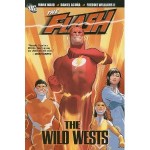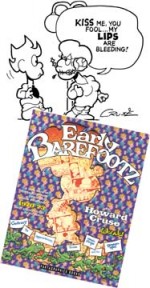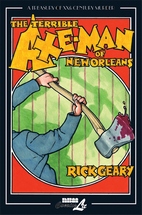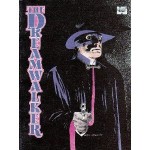
By Mark Waid, Daniel Acuña, Freddie Williams II & others (DC Comics)
ISBN: 978-1-4012-1828-7, paperback 978-1-84576-873-7
Jay Garrick debuted as the first Scarlet Speedster in Flash Comics #1 (January 1940), created by Gardner Fox and Harry Lampert. “The Fastest Man Alive†wowed avid readers for over a decade before changing tastes benched him in 1951. The concept of speedsters and superheroes in general was revived in 1956 by Julie Schwartz in Showcase #4; police scientist Barry Allen becoming the second hero to run with the concept.
The Silver Age Flash, whose creation ushered in a new and seemingly unstoppable era of costumed crusaders, died heroically during Crisis on Infinite Earths (1985-1986) and was promptly succeeded by his sidekick Kid Flash.
Wally West struggled to fill the boots of his predecessor, both in sheer ability and, more tellingly, in confidence. Feeling a fraud, he nonetheless persevered and eventually overcame, becoming the greatest to own the name. After many amazing adventures he married his beloved Linda Park, but just as happiness seemed certain they both disappeared in the reality-bending chaos of the Infinite Crisis…
After the brief death of Bart Allen (Impulse, the second Kid Flash and momentarily the fourth Scarlet Speedster – for which see Flash – Fastest Man Alive: Lightning in a Bottle and Flash – Fastest Man Alive: Full Throttle Wally and Linda returned in a spectacular blaze of glory for six issues, accompanied by their two children, already young heroes in waiting…
Wally West (via scripter Mark Waid) revealed to the DC Universe that all super-speedsters derived their enhanced velocity from an omni-pervasive energy field which permeated all of creation. This “Speed Force†generally provides the energy and stamina needed for extreme accelerated motion and the dubious faux-physics of that fact permeate this rollicking adventure-romp which originally appeared as Flash volume II, issues #231-237.
The twin cities of Central and Keystone have been without heroes for a year when a pair of youngsters, no more than eight or ten, respond to a inexplicable, devastating ferry crash, rescuing drowning passengers from the river using super-strength and vibrational intangibility. As news-crews swarm the kids a reassuringly familiar crimson-and-gold blur once more appears, whisking them away.
And thus we’re introduced to Wally and Linda West’s unique brood, Jai and Iris: one-year-olds cursed with the rapid-aging that blights the children of speed-force users. No one knows where they’ve been and in that timer Linda has blossomed into a scientific wizard: the world’s leading authority on super-speed medicine. As the new parents readjust to life on Earth a race of aquatic aliens launch a wave of “revenge-attacks†on the twin cities, implying the lineage of Flashes was ultimately responsible for their deadly actions.
The recent whereabouts of the Wests becomes crucial to unravelling the motives for the invaders’ murderous rampage (a mystery originally and gradually resolved in short, light-hearted strips by Waid, co-writer John Rogers and artist Doug Braithwaite in the back of each issue, but which are here gathered into one large tale ‘The Fast Life’, preceding the last chapter), and although Wally easily slips back into the role of hero, he feels himself falling far short in new his position of father and provider.
Still, if he can’t stop the water-marauders all his worries will be irrelevant…
The first two chapters are illustrated by the marvellous Daniel Acuña, with Freddie Williams II completing the guest-star stuffed, all-action epic whilst the concluding tale ‘Superman’s Cape’ (written by Keith Champagne and illustrated by Koi Turnbull & Art Thibert) ends the book on a delightfully agreeable high note, combining drama and comedy into a magical tale about learning the heroic ropes.
Fast, furious and sensationally fun this is a magical jaunt for fans of the third Scarlet Speedster, balancing romance and pathos with mind-bending Big-Science, gentle comedy and the mandatory high-speed thrills. My only quibble is that the Wests were casually sidelined to make room for the regrettably inevitable return of Barry Allen.
Still I can’t be the only one asking “Where’s Wally?†so hopefully there’s more to come from the fastest Family Alive…
© 2007, 2008 DC Comics. All rights reserved.








